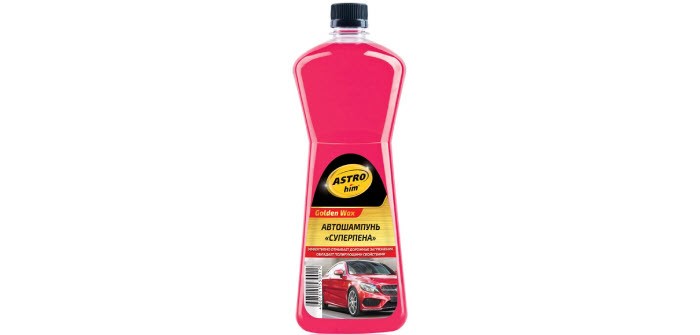
How to flush car brake fluid
Content
Air or water in the brake fluid causes the brakes to sag and reduce braking efficiency. Perform a brake fluid flush to remove all contaminated fluid.
The braking system is one of the most critical systems in any vehicle. The braking system relies on brake fluid to bring the car to a stop at just the right moment. Brake fluid is supplied by the brake pedal and the master cylinder that actuates the disc brakes.
Brake fluid attracts moisture and air can form bubbles in the system, which in turn leads to contamination of the brake fluid. In this case, it is necessary to flush the brake system of the car.
This article shows you how to perform a brake flush on your vehicle. The location of the various parts on your vehicle may vary, but the basic procedure will be the same.
- A warning: Always refer to the owner's manual for your vehicle. Brakes can fail if flushing is not done properly.
Part 1 of 3: Raise the car and prepare to bleed the brakes
Necessary materials
- Brake fluid
- Liquid bottle
- transparent tube
- socket
- Jack stands
- Socket set
- Wrench
- turkey buster
- Wheel chocks
- Set of wrenches
Step 1: Test drive the car. First, you will need to test the effectiveness of the brakes by taking your car for a test drive.
Pay special attention to pedal feel as it will improve with brake flushing.
Step 2: Raise the car. Park your vehicle on a level surface and apply the parking brake.
Use the rear wheel chocks while the front wheels are being removed.
- Functions: Read this article to make sure you know how to use the jack and stand safely.
Loosen the lug nuts on each wheel, but do not remove them.
Using a jack on the lifting points of the vehicle, raise the vehicle and place it on stands.
Part 2 of 3: bleed the brakes
Step 1. Locate the fluid reservoir and drain it.. Open the hood and locate the fluid reservoir at the top of the brake fluid master cylinder.
Remove the fluid reservoir cap. Use a turkey attachment to suck out any old fluid from the reservoir. This is done in order to push only fresh fluid through the system.
Fill the reservoir with new brake fluid.
- Functions: Please refer to your vehicle owner's manual to find the correct brake fluid for your vehicle.
Step 2: Remove tires. The fastening nuts should already be loosened. Remove all lug nuts and set tires aside.
With the tires removed, look at the brake caliper and locate the bleeder screw.
Step 3: Start Bleeding Your Brakes. This step will require a partner.
Read the procedure in its entirety before attempting to follow it.
Start at the brake bleeder port farthest from the master cylinder, usually the rear passenger side unless the manual says otherwise. Place a clear tube over the top of the bleed screw and insert it into the fluid container.
Have an assistant depress and hold the brake pedal several times. Have them hold the brake pedal until you close the brake bleed screw. While your partner is holding the brakes, loosen the bleed screw. You will see the brake fluid come out and air bubbles, if any.
Bleed the brakes on each wheel until the fluid is clear and free of air bubbles. This may take several tries. After several attempts, check the brake fluid and top up if necessary. You will also need to check and top up the brake fluid after bleeding each turn.
- A warning: If the brake pedal is released with the bleed valve open, this will allow air to enter the system. In this case, it is necessary to restart the procedure for pumping the brakes.
Part 3 of 3: End the Process
Step 1: Check Pedal Feel. After all brakes have been bled and all bleed screws are tight, depress and hold the brake pedal several times. The pedal must remain firm as long as it is depressed.
If the brake pedal fails, there is a leak somewhere in the system that needs to be repaired.
Step 2: Reinstall the wheels. Install the wheels back on the car. Tighten the lug nuts as much as possible while keeping the vehicle raised.
Step 3: Lower the vehicle and tighten the lug nuts.. With the wheels in place, lower the vehicle using a jack at each corner. Remove the jack stand in the corner and then lower it.
After the car is completely lowered to the ground, it is necessary to tighten the fastening nuts. Tighten the lug nuts in a star pattern at each corner of the vehicle. * Attention: Please refer to your vehicle owner's manual to find the torque specification for your vehicle.
Step 4: Test drive the vehicle. Before driving, check and make sure that the brake pedal is working properly.
Take a test drive of the car and compare the current pedal feel with what it was before. After flushing the brakes, the pedal should become firmer.
Now that your brake system has been flushed, you can rest easy knowing your brake fluid is in good condition. Do-it-yourself brake flushing can save you money and let you get to know your car better. Flushing the brakes will help ensure long brake life and avoid problems due to moisture in the system.
Bleeding the brakes can cause problems if not done properly. If you are not comfortable doing this service yourself, hire a certified AvtoTachki mechanic to flush the brake system.